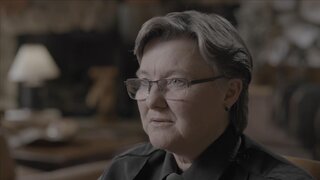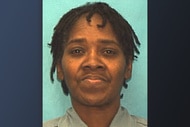Create a free profile to get unlimited access to exclusive videos, breaking news, sweepstakes, and more!
Missing Brooklyn Boxer Found 4 Years Later Buried In New Jersey With a Broken Neck
The arrest of members of a Russian mob gang helped investigators finally crack the case that had gone cold.
In March 1999, working on a tip from a Russian mobster, police dug up a body from the backyard of a residence in Livingston, New Jersey.
Skeletal measurements indicated that the victim was male, 25 to 35 years old, six-feet-one, and about 200 pounds.
His neck had been broken. “There was a lot of violence,” said Special Agent Thomas, lead case agent, FBI Eurasian Organized Crime Task Force.
“We needed to find out what happened to this man,” he told Buried in the Backyard, airing Saturdays at 8/7c on Oxygen.
The answer to that mystery reached back to 1995 and the densely Russian neighborhood of Brighton Beach in Brooklyn. In the community, a favorite pastime was boxing, and the sport was experiencing a Russian influx, according to Buried in the Backyard.
RELATED: Alleged North Pole Serial Killer Strangled and Shot 4 Young Women and 1 Girl
Star boxer Sergei Kobozev vanishes
The star of the show was 31-year-old Sergei Kobozev, a 195-pound cruiserweight who was unbeaten save for one fight.
Well-educated with a military background in Russia, Kobozev was beloved in the community. He came to Brooklyn because “he was using boxing to improve himself,” said boxing trainer Tommy Gallagher.
“Sergei was a great dad to me,” said Vitaly Cherskikh, whose mother was dating Kobozev. “He taught me to throw my first punch. He always told me not to use it for the wrong reasons.”
After taking his 1988 Chevy Blazer to a mechanic on November 8, 1995, Kobozev vanished. A missing persons case was filed, prompting police to check hospitals and the morgue.
Mechanics reported that Kobozev came in for repairs and “left a happy man,” according to investigators.
Sergei Kovezev's Job at Paradise Bar
Police learned that Kobozev had a side hustle working as a bounder at the local bar, Paradise, said Special Agent Raymond Kerr, Supervisor, FBI Eurasian Organized Crime Task Force.
Bar employees shared no useful information. Police suspected that people were afraid to talk because the Russian mob loomed large.
“Everything on the beach was controlled by organized crime,” said Molly Gordy, a journalist with the New York Daily News. “It was just woven into every part of the fabric of the community back then.”
RELATED: Elderly California Man Strangled and Found Buried Inside a Giant Concrete Egg
The Russian Organized Crime Task Force was formed as a response, made up of FBI agents and New York City police detectives. “Our squad got involved in the Kobozev case early on,” said Kerr.
Kobozev’s disappearance raised an echo of an earlier case. Russian boxer, Oleg Korotayev, had become a mobster who ended up getting shot execution-style in 1994.
Was Kobozev involved with the mob? A thorough investigation found that he had no ties whatsoever, according to detectives.
“I’d never received one word of negative information about him,” said Thomas. The only common thread between Korotayev and Kobozev was that they were boxers.
Sergei Kovezev's disappearance possibly tied to the mob
Still, investigators knew that Kobozev must have crossed paths with individuals linked to the Russian mob.
But if the mob is to blame for his disappearance, proving it wouldn’t be easy. Investigators focused on what had happened in Kobozev’s life before he vanished.
“Two weeks before Sergei disappeared …he had his first international fight in Paris,” said Gordy, noting it marked his first defeat.
Had that loss sent him into a downward spiral? Detectives learned that wasn’t the case. He was keen on a rematch. “So that theory fell on its face,” said Thomas.
A week into the case, Kobozev’s car was found in the parking lot of a diner. The vehicle was towed to an NYPD garage.
A search of the Blazer showed no signs of a struggle and yielded no useful print or blood evidence, according to detectives. But a new theory was raised. Had Kobozev been carjacked?
Because random violent street crime was rare, that seemed unlikely, said Thomas. Such activity that did go down involved various Bratva, or criminal brotherhoods.
Kerr learned that members of crime boss Vyacheslav Ivankov’s group called the Brigade frequented Paradise. Police reinterviewed employees who, once again, clammed up out of fear.
“People didn’t want to get involved,” said Gallagher.
Paradise club altercation becomes key to the case
But as weeks went by, “there were a number of different informants unrelated to each other bringing forward information that there was some type of altercation at the Paradise Club between Sergei and a bunch of rough criminal types,” said Thomas.
Investigators learned that the conflict involved the bar’s house band. Kobozev was told to throw out three men who had a violent dust-up with the musicians.
When he was questioned by police, the band member said he got a broken nose by falling, not a punch, according to investigators.
The case went cold for years. By 1999, the task force had spent over two years investigating the Brigade.
The group “had a finger in almost every single type of pie to make money,” said Thomas. “Home invasion, hostage holding, torturing people.”
Eventually a handful of men were arrested in a RICO (Racketeer Influenced and Corrupt Organizations) sting. Among them was high-level mobster Alexander Spitchenko, “a wily monster of a human being,” according to Thomas.
Spitchenko eventually negotiated a complex deal to ensure his family’s safety and agreed to be a federal witness.
Russian mob boss spills about Sergie Kobozev's murder
After the deal was sealed, Thomas recalled that Spitchenko said, “I bet you want to know about the boxer.”
Spitchenko then named Vasiliy Ermichine, Alexander Nosov, and Natan Gozman, three street-level lieutenants for the Brigade who were involved in the murder of Kobozev.
They were the men Kobozev ejected from the bar. Spitchenko, who was the head of the crew, told them they couldn’t let him get away with humiliating them, according to Thomas.
By chance, the trio was in the garage when Kobozev went to get his car repaired. A brawl broke out and Nosov shot Kobozev in the back, according to Thomas.
They drove to Spitchenko’s house in Livingston, New Jersey. Before they buried him in a shallow grave in the backyard they broke his neck to make sure he was dead.
Two of the men Spitchenko named, Ermichine and Nosov, had already been arrested as part of the roundup of the Brigade. Gozman had fled the country to avoid prosecution.
The dig for the body began on March 26, 1999. On the fourth day, skeletal remains were unearthed. Kobozev’s dental mouth guard was used to confirm his identity, according to Buried in the Backyard.
In November 2001, Ermichine and Nosov’s trial for racketeering and murder began. Spitchenko laid out what happened in his court testimony. Both defendants were found guilty and sentenced to life in prison.
Gozman was ultimately apprehended in Eastern Europe. He decided to cooperate with the federal government. He was sentenced to ten years in federal prison. He was released in 2013 and later helped the FBI in a financial fraud case.
Spitchenko went into the witness protection program with his entire family.
To find out more about the case, watch Buried in the Backyard, airing Saturdays at 8/7c on Oxygen.




































